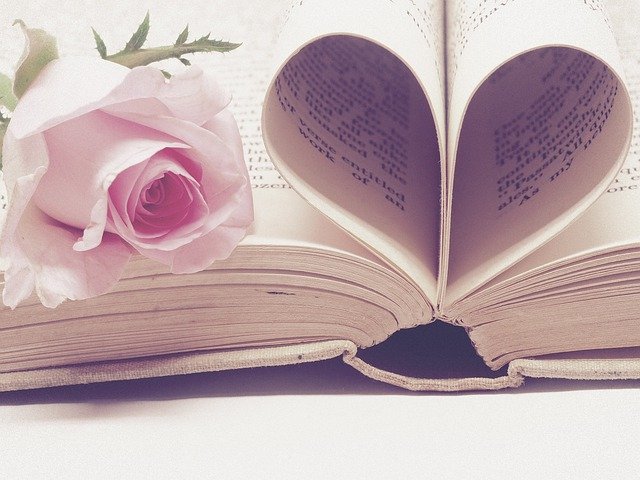Romance: what it is, how it is born, characteristics, types, structure and more
Contents
What is the romance subgenre?
It is one of the most important subgenres of the epic genre, which is distinguished from the others by being a long story, written in prose and especially fiction, since it creates an imaginary world in which the characters face a series of events within the world of the marvelous.
The first romance of which there is information would be that of Jaume Olesa, since fragments of his work were found.
Meaning of romance subgenre
The term -romance- comes from the French Román, which refers to a theory of literature of fictional character, a story written mostly in prose that highlights an imaginary world. The word has its origins in the Middle Ages, where the production of works of this type began to be linked and even confused with the novel. For example, in Spanish, the distinction between the two subgenres is usually made on the basis of the novella and the novella corta.
Definition of romance subgenre
The romance is a type of poem that is part of the oral tradition and that was only possible to rescue from written compilations in books that received the name of -romanceros-. Thus, romances are narrative poems that can include a wide variety of themes, so they can be sung or recited by minstrels who continue with the dissemination of its content wherever they go, as these were artists who went telling stories, in this case romances, wherever they went in exchange for money or food.
History and origin of the epic romance
Between the 11th and 12th centuries, the development of this sub-genre began, which later received this name with the expansion and translation of the works. This is how the consolidation of the sub-genres began in France towards the end of the 12th century and began to spread to other areas, so that the themes of other regions began to travel through the writing of these works. However, to place the birth of romance in a specific time and space has been very difficult, as some place it based on the models of Ancient Greece.
This would be a space that would develop with the printing press, where authors could speak a new language, but prose had the possibility of experimenting with new rhythms. Nevertheless, the first romances appear as a fashion that emerges thanks to the printing press and that begins to develop from this moment on.
It is considered that many of these works were a source of inspiration for the development of comedies of the dramatic genre, especially during the Golden Age, given the importance of the emotional aspect in the composition of romances.

Characteristics of the romance subgenre
Now let’s look at some particularities of this epic subgenre:
Central plot
The central plot of the romance is usually directly related to the adventures, in which the hero lives through a series of events until he can finally meet the woman he loves, also known as the lady. After this there is usually a separation of the lovers with another series of adventures that progressively lead towards the end of the story, however, the subgenre worked and developed many other variations that broadened the panorama of adventures.
Type of content
Another basic aspect of the romance is the variety of themes it can deal with in its content, in addition to having a structure that allows it to narrate a great variety of events that will continue to be maintained thanks to the popular tradition in oral form and that even reach the present day.
Textual resources
One of the most important characteristics of romance is that it usually includes a large number of resources, including lexical repetition, varied repetition, phonetic alliteration, parallel constructions, similes and comparisons, sensory images, that is to say, images that correspond to a particular sense, realism, dialogue, determinant endings and abrupt cuts, among many others.
Extra-textual resources
These are another series of tools that can bring a much more loaded sense and even influence the meaning, for example, temporal locations based on a religious date or a significant space, the location of the action in relation to a specific space near a natural reference point, for example, among others.
Music
Another aspect that should be pointed out is the music, since the tunes of the romance are popular. They are tunes that are composed of two melodic phrases, where the first one presents a cadence that is suspended, while the other one is conclusive. There are also romances that have much longer phrases, and there may even be a repetition of verses.
The feminine figure
Particularly, the woman can appear as the faithful and unfortunate image, although sometimes she also appears in a malicious and vengeful way, that is, she can be either innocent, docile and noble, or strong, brave and calculating. However, these images can vary, given that romances can be part of a different context whenever they are composed, so that the female figure is not always presented in the same way, but does not lose importance within the romance.
Distinction with the European ballad
One of the main differences lies in the fact that the ballad opts for realism, while the romance focuses on the fantastic, with a more evident inclination towards the emotional.
Structure of the romance subgenre
One of the particularities of the romance, has to do with the structure, which follows a narrative character in which it is possible to distinguish several parts. Among them:
Beginning: it poses a starting situation in which the characters are presented, especially the protagonists of the story and give rise to start the journey they must live to reach their final task.
Knot: in this area, as in any narrative story, there is a central axis that complicates the whole situation of the protagonists, where they face a series of obstacles that put them in danger or in conflict.
Resolution: this is the final part of the text that is defined by the course that the story took from the conflict in the immediately preceding part. It is developed after the complication to propose a solution that can be positive or negative, and some authors even prefer to leave it without a clear ending.
From this first organization, other structures of the romance appear, which are:
Romance scene: it focuses on the most emotional or dramatic moment of the whole story. This space has a beginning and an end that has no interruptions or additional events that turn the story, but has a footing for the development of the conflict with an open ending.
Types of romance subgenres
With the passage of time and the creations of authors of the time, several modalities of romance were developed, so that the following types can be identified:
Historical Romance
These are romances in which the content focuses on aspects of history or legendary heroes who are part of national history and to whom a special importance for posterity is attributed. They are also often called legendary romances because they include the heroes’ exploits.
Frontier Romance
As their name indicates, these are romances that narrate events and situations that took place on the frontier, specifically with the Moors during the Reconquest.
Traditional Romance
They are also known as traditional, blind or vulgar romances. They narrate situations of bandit exploits, crimes or events that are sensationalist, such as miracles. It is often a type of romance that is included in historical romances, although they also appear in others such as novel romances.
Carolingian Romance
A type of romance based on the cantares de gesta from France.
Lyric Romance
It is a type of romance that allows much more freedom to the writer, since it is left to the imagination and it is the artist who writes according to his own taste. Sentimental and subjective features are often present, replacing certain less dramatic details, as in the case of the cantar de gesta. In this modality the narrative elements are left out, the focus is on the immediate action and the context is also suppressed.
Novel Romance
Finally, this type of romance may include a large number of themes inspired, most of the time, by Spanish folklore.
Authors and most important works of romance
Although authors such as Jaume Olesa appear, who is considered to be the first author of romances due to the fragments found of his work, experts discuss this subject attributing Cervantes as a representative, based on the oral composition he made, since it is discussed whether romances were poetry or stories due to their narrative character and composition, so that there is debate about the content of the work Don Quixote.

Example of the romance subgenre
The following is a fragment of one of the oldest versions of the work Romance de Fontefrida, one of the most important works of romance, however, neither the date of its composition nor the name of its author is known:
Fonte-frida, Fonte-frida,
Fonte-frida and with love,
do all the birds
are going to take consolation,
but it is the tortolica
who is widowed and in pain.
The nightingale’s traitor
the nightingale’s traitor:
the words he says to her
are full of treachery:
-If you would, madam,
I would be your servant.
-Go away from there, enemy,
you evil, false, deceiver,
Who neither perch on green boughs,
Nor in a meadow that hath blossom;
For if I find the water clear,
I would drink it cloudy;
I would not have a husband,
because there are no children, no:
I want no pleasure with them,
nor less consolation.
Leave me, sad enemy,
evil, false, false, evil traitor,
I do not want to be your friend,
nor marry you, no.
